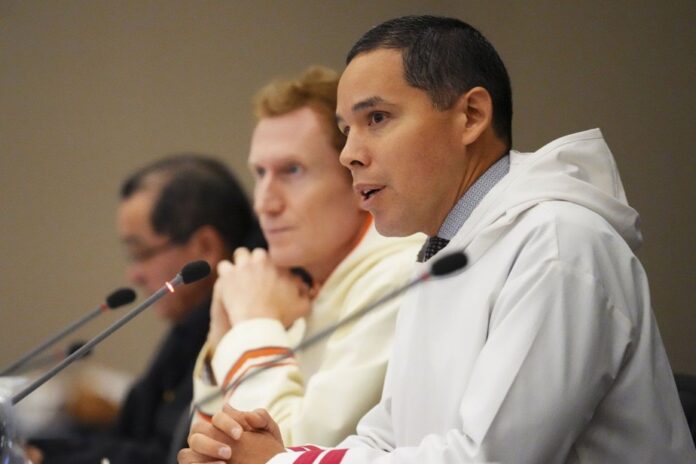Funding for infrastructure and economic development are two of the main demands that some leading Aboriginal organizations have presented to the Liberal government in view of the tabling of its next budget.
But with affordability issues high on the agenda and Finance Minister Chrystia Freeland promising budget cuts, it’s unclear where those demands will end up on the Liberals’ priority list.
Ms. Freeland promised that the spending plan to be released on Tuesday will demonstrate fiscal discipline.
In addition to offering relief to Canadians struggling with high prices, the budget is also expected to include funds to advance Canada’s green energy transition and measures to ensure the country can compete with the United States, who are aggressively funding cleantech with their Curbing Inflation Act.
So what about the federal government’s commitment to reconciliation?
The president of the Inuit organization Tapiriit Kanatami, Natan Obed, said that despite the government’s rhetoric of restraint, it will continue to spend billions – and he hopes this will include a commitment of $75 billion over 35 years to infrastructure in Inuit communities.
“There is going to be money spent in this budget, while the government is talking about a very lean budget, there will still be billions of dollars,” he said in a recent interview.
Obed said the requests included in the organization’s pre-budget submission stemmed from discussions with Prime Minister Justin Trudeau’s government at the Inuit-Crown Partnership Committee table.
“It’s not just numbers that we come out of nowhere,” he added. The organization has also requested approximately $131 million over seven years with the goal of eliminating tuberculosis in Inuit regions by 2030.
Mr. Obed maintained that the Trudeau government was committed to meeting that deadline, but did not show how it would achieve the goal.
“We have no guarantee that [the] Government of Canada will fund the rest of the work needed to eliminate TB,” he said.
Mr. Trudeau has made reconciliation with Indigenous peoples one of his government’s top priorities since taking office in 2015.
However, last year’s budget fell short of expectations with respect to the improvement and construction of First Nations housing, which has long been identified as a problem for many communities across Canada. .
Indigenous communities face a deteriorating housing stock, and leaders and experts have said there is not enough to support population growth.
Prior to the 2022 federal budget, the Assembly of First Nations — which advocates for the needs of more than 600 First Nations communities — estimated that $44 billion was needed to repair on-reserve housing.
Ottawa ended up committing $4.3 billion to support housing in Indigenous communities over seven years, including $2.4 billion specifically for on-reserve housing needs.
For the next budget, the Assembly projects that meeting “current and future First Nations housing needs” through 2040, taking into account population group, would cost approximately $63.3 billion, according to a bid prepared in for the tabling of the federal spending plan.
She says such spending is necessary “to address the overrepresentation of First Nations people among homeless people.”
For her part, Métis National Council President Cassidy Caron said in a statement that she hopes the next budget will include funding for the organization to create an economic development fund specifically to help Métis businesses. .
In its submission to the federal government, the organization says Métis communities cannot access funds through the two existing programs that Indigenous Services Canada runs to support economic development.
She also recommends that the federal government provide funding to help create Métis business directories.
“Long-term, sustainable investments will help our citizens, communities and businesses meet current and future challenges,” said Ms. Caron.
The federal government also signaled in its fall economic statement that it planned to develop a new framework to “ensure” that First Nations and other Indigenous communities “can directly benefit from major resources” developed on their lands, and that more information would be provided this year.
A presentation prepared by the Assembly of First Nations for its special chiefs assembly last December shows that it expected to see policy options on the issue in early 2023 and then finalize a framework between April and December.
The executive director of the Native Women’s Association of Canada, Lynne Groulx, said that in addition to a request for more stable federal funding, the group hopes the Ottawa budget will fund at least two new healing lodges, which she says will provide safe spaces for Indigenous women and residential school survivors.
Ms. Groulx indicated that a pavilion can cost between three and five million dollars. She added that funding for such projects is directly tied to the government’s commitment to implementing the Calls to Action from the 2019 Final Report of the National Inquiry into Murdered and Missing Indigenous Women and Girls.
“I think we need as many healing centers, gathering centers…as there were boarding schools,” she said.















